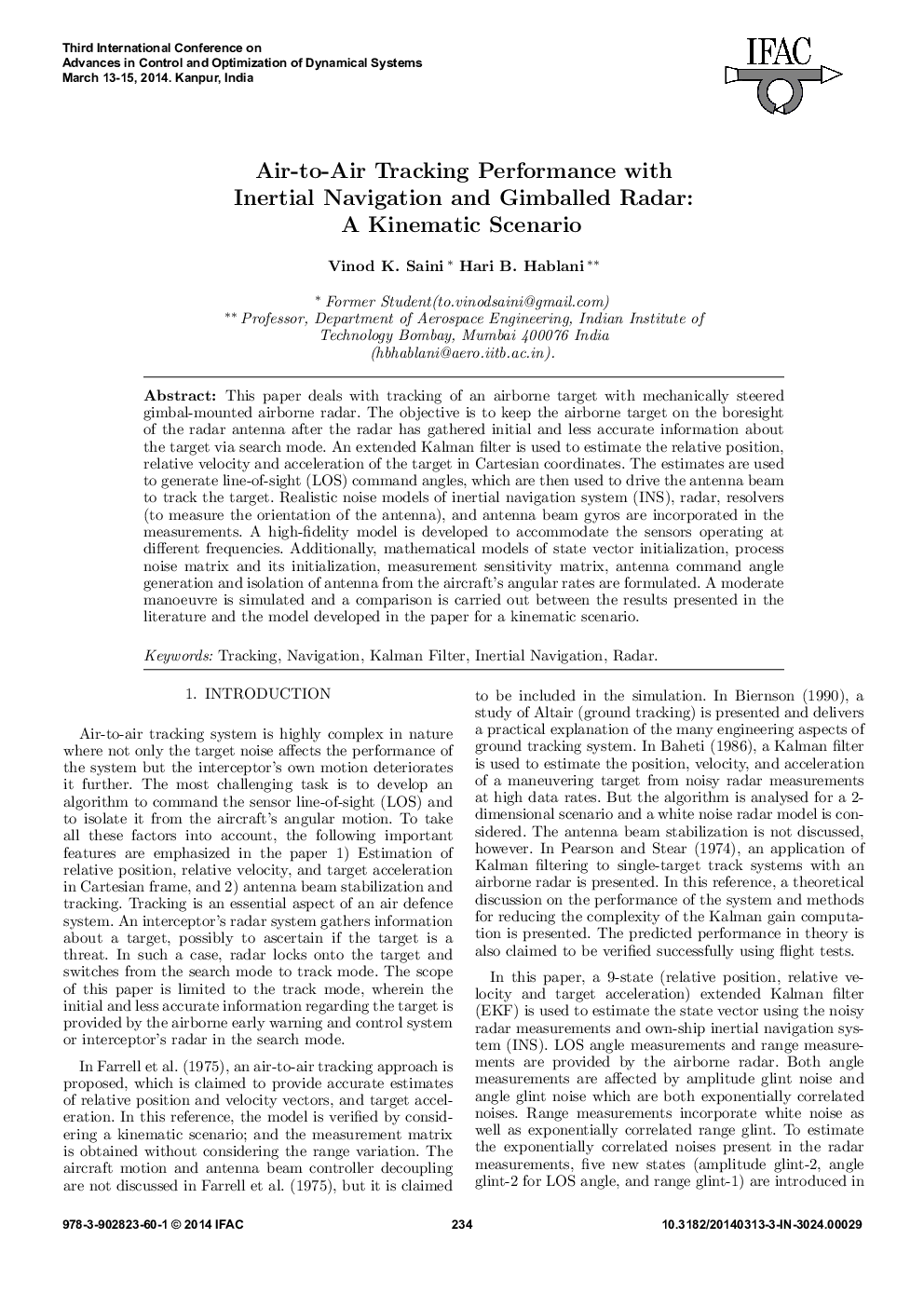| Article ID | Journal | Published Year | Pages | File Type |
|---|---|---|---|---|
| 713365 | IFAC Proceedings Volumes | 2014 | 8 Pages |
This paper deals with tracking of an airborne target with mechanically steered gimbal-mounted airborne radar. The objective is to keep the airborne target on the boresight of the radar antenna after the radar has gathered initial and less accurate information about the target via search mode. An extended Kalman filter is used to estimate the relative position, relative velocity and acceleration of the target in Cartesian coordinates. The estimates are used to generate line-of-sight (LOS) command angles, which are then used to drive the antenna beam to track the target. Realistic noise models of inertial navigation system (INS), radar, resolvers (to measure the orientation of the antenna), and antenna beam gyros are incorporated in the measurements. A high-fidelity model is developed to accommodate the sensors operating at different frequencies. Additionally, mathematical models of state vector initialization, process noise matrix and its initialization, measurement sensitivity matrix, antenna command angle generation and isolation of antenna from the aircraft's angular rates are formulated. A moderate manoeuvre is simulated and a comparison is carried out between the results presented in the literature and the model developed in the paper for a kinematic scenario.
